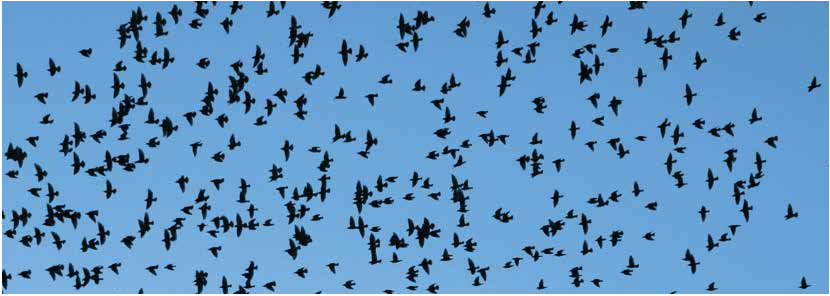Issue:


As a tool for journalists, tweeting has as many good points as bad. But it’s definitely not for the faint of heart.
Love it or loathe it, using Twitter is a reality for many in modern journalism. Stay off the social media for a few days and you are likely missing out on great conversations with readers at the very least. Ignore it completely and you may be missing the juicy morsel that was going to lead to that Pulitzer.
At least, that is how it seemed back in the late years of the last decade, when social media was really taking off and idealism about the future of online journalism was at its peak. Today, Twitter has lost a great deal of its luster. Trolls those using it for the sole purpose of attacking other users have become an irritant; early ambitions to see a more active role for citizen journalists, noble figures sharing information to help democracy along, have been tempered. And the platform’s other roles, including its use as a distraction from work, have led to a more realistic idea of what Twitter can do and what it is for.
Still, Twitter remains essential for journalists. “It’s useful during breaking news stories because it is faster than other news sources,” says David McNeill, a writer with the Economist and Irish Times. “The most obvious example was following the earthquake. But I also used it during the Japanese hostage drama last year, and it does put you at the heart of a story.”
The Washington Post’s Anna Fifield, one of the more prolific tweeters, says that she uses it for following what other journalists are writing. “I focus on Japan and the Koreas, but my territory extends to Southeast Asia and Australasia,” she says. “Twitter means I can make good use of all the eyeballs that are watching the news in these various countries.”
FIFIELD IS ONE OF the many who also use the media as an output platform both to distribute links to their own stories, and draw attention to stories, topics and events that they believe their followers are interested in. That’s where things can get complicated, as there’s the potential for things to end up unexpectedly and dramatically amplified. One story that you’ve worked on for five weeks might disappear into Twitter oblivion without even a puff of smoke. Something else that you’ve just tossed out there . . . well, let me tell you about it.
It all started with 10 words “Japan has a creepy new ad out. I don’t even…” that I tweeted last October along with a link to a 10-minute YouTube clip of a commercial.
The video I linked to starts with the scene of a high school auditorium, where a teacher is delivering a speech congratulating the students on their hard work. It could be in any local high school except that all the students are wearing large nose rings. One-by-one, the youngsters walk to the stage to be given jobs.
They are sent to zoos, farms and slaughterhouses and it soon dawns on us that these school kids are, in fact, meant to be cattle. One girl, the heroine, recalls the months leading up to graduation as she waits her turn. Refusing to tame her lofty ambitions, she has worked hard, both in studies and physical exercises. As the flashback reaches its crescendo, we see her running through the countryside, a determined look on her face and apparently more important to the short film’s message her prominent breasts bouncing as she pushes forward.
Back in the hall, we learn the girl’s fate as she stands before the teacher: Her dreams have been answered, he proudly announces, and from now on those breasts will be producing milk for Blendy, a coffee produced by Ajinomoto General Foods. Our heroine is over the moon. And somewhere, in front of their computers and TV screens, people are expected to suddenly feel an urge to “Drink Blendy.
FOR A FEW DAYS, simply by tweeting that fairly innocuous phrase along with the link, I became the driver of what the British website Guido Fawkes calls the Twitter Anger Bus. Tens of thousands of Japanese Twitter users expressed their reaction generally outrage after retweeting me or citing my Twitter stream as the source for the video.
By the time the storm was over, more than 25,000 people had clicked through to the video. It was retweeted 3,500 times; others linked to it with their own commentary: “Disgusting!” “I’ll never drink their coffee again,” “It’s a commentary on modern Japan.” And, “I think it’s great.” The tweets kept coming and coming and coming. “Blendy CM,” according to Twitter data, was for a few hours among the top five phrases tweeted in Japan.
An article about the viral activity was published in the weekly Spa!, and also appeared on the Yahoo News website. The headline screamed: “‘Why has this exploded now?’ A Blendy commercial from a year ago is currently a huge conversation topic.” It pointed to me as ground zero for the online storm, and its conclusion was: Beware of foreigners.
But my contribution was nothing more than that tweet. The commercial itself was produced and released by Dentsu in the autumn of 2014, and then entered in a creative festival in Singapore a year later. Around the same time, it was uploaded without authorization to YouTube. (Dentsu later removed the video, claiming a copyright violation.)
The credit (or blame) for the commercial going viral has to be shared with Shihoko Fujiwara, who first told me about it and whose anti-trafficking organization Lighthouse helped push the Twitter debate. “The reason it bothered me and all my staff at Lighthouse is that it clearly sexualizes underage girls,” Fujiwara said. “Only Japan makes these kind of ads.”
THAT THIS BIT OF online anger stemmed from an advert for coffee goes to the heart of the nature of Twitter. Says Tim Hornyak, a freelance journalist: “My tweets with the most legs tend to be about some bizarre, funny or controversial event such as the demolition of the Hotel Okura or a funeral for Aibo robot dogs or the Fukushima nuclear disaster. These are usually original or from news sources that haven’t been seen much in the English-speaking world.”
Andy Sharp, who has covered such mainstream topics as Abenomics and the second term of Prime Minister Shinzo Abe for Bloomberg, also sees weird tweets getting more traction. “One tweet that went viral was a shot from TV that showed Abe trying to explain the security legislation using a chart that looked like the entrails of a pig,” he says.
It pointed to me as ground zero for the online storm, and its conclusion was: Beware of foreigners
With the amplification of the random being among the idiosyncrasies of Twitter today, many are asking why bother with the platform, and they are not just journalists. In February, stock in the company fell sharply after user growth for the October-December quarter stalled at 320 million users. The skeptical view this as evidence that the platform is suffering myriad problems. Trolls are discouraging some from joining; navigating the platform is tricky for beginners; and attempts to improve the user experience have not always worked.
NEWS ORGANIZATIONS CAN BE as ambivalent about Twitter as the rest of the world. Jake Adelstein, who writes for the Daily Beast, LA Times and others, says editors today at many places assume their writers will nurture a Twitter presence. “They watch it to some degree,” he says. “Sometimes I will tweet a few things that my editor notices” and a story is born.
Other editors, however, are not as attentive. McNeill feels no pressure to microblog from work. “I’m not a staffer at any of the papers I write for,” he says. “[So] it’s important for freelance journalists looking to build a name and presence. I resisted it for a long time because I just saw it as adding to my burdens but I’ve started tweeting in the last year or so for that reason.”
Fifield at the Washington Post also uses the account to help build her brand. She gives “people a flavor of my reporting adventures, especially through pictures. Recently I sent out a bunch of photos and videos from the anti-base protest at Henoko to complement my traditional reporting, but I also tweeted a photo of the view from my hotel room on a recent trip to Fukushima. It was a concrete wall. I like to have fun with Twitter.”
But despite journalists’ wishes, controlling what goes viral and what doesn’t may be impossible. The Blendy tweet, for example, exploded for a reason, though not one that I was expecting. Some people on Twitter can amplify messages simply because of their large number of followers. And certain issues will capture attention at certain times. The Blendy ad was picked up by the account of the Students Emergency Action for Liberal Democracy, SEALDs, just weeks after they helped organize one of the biggest protests in Japanese history, against legislative reform on security. At the time, fretting about Japan was all the rage among those supporting the protests.
This, says Hornyak, is helped in part because Twitter has “a cocktail party atmosphere of interactions with like-minded people.” SEALDs, a group of youths looking out for the future of their country and with the best of intentions, are also hosting their own “party.” Get caught up in it and you could end up in the weeklies.
Leaving the platform, however, does not feel like an option. It remains one of the best online platforms for meeting insightful, interesting and entertaining people. Sharp sees it as a way “to engage and make contacts.”
Hornyak also sees it as essential. “I don’t see how any journalist can not be using it. I don’t tweet about political issues much so I don’t get many negative comments. But if you don’t like what’s in your Twitter stream, you can easily change that. And you can follow, mute or block irrelevant, boring or rude people including trolls.”
Richard Smart covers Japanese business, science and the economy for publications across the world.

